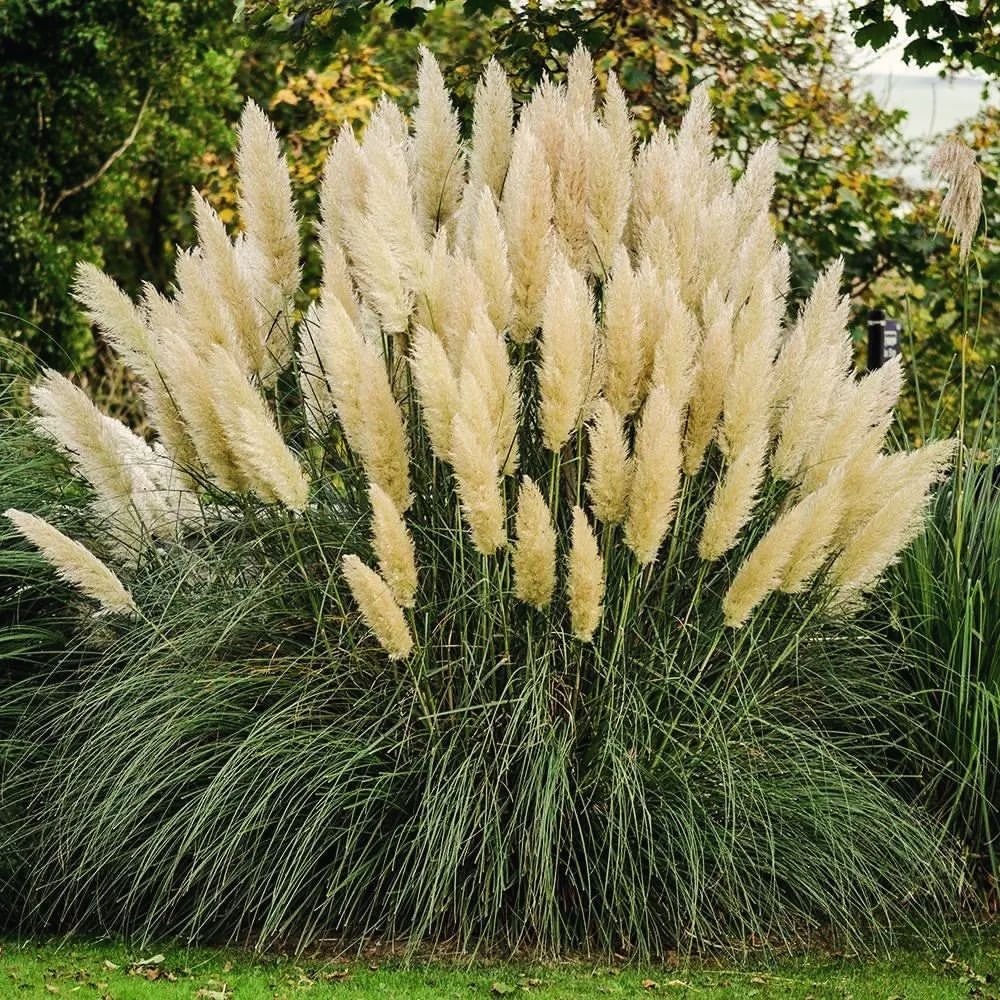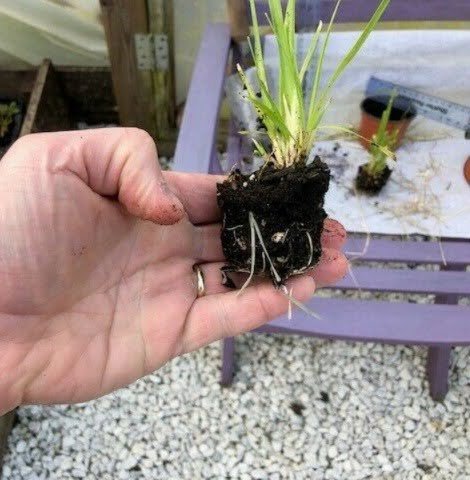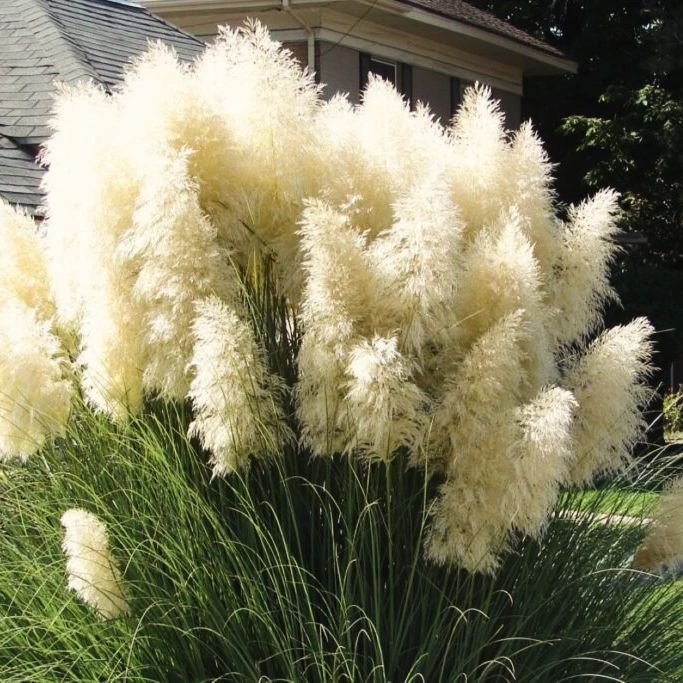Find out how to grow Pampas Grass successfully with our top tips. Learn about planting, watering and pruning to create a thriving garden.
Pampas grass is a striking ornamental plant that can add drama and texture to any garden. With its tall, feathery plumes and graceful arching leaves, it’s no wonder this grass has become a popular choice for landscapers and home gardeners alike. In this guide, we’ll cover everything you need to know about growing pampas grass successfully, from planting to care and maintenance.
Here’s a short information chart about Pampas Grass:
| Characteristic | Description |
|---|---|
| Scientific Name | Cortaderia selloana |
| Common Name | Pampas Grass |
| Appearance | Large, feathery plumes of flowers on tall stalks; typically white or pink |
| Leaf Shape | Long, narrow, arching blades |
| Plant Type | Ornamental grass |
| Hardiness Zones | USDA Zones 7-11 |
| Sun Exposure | Full sun to partial shade |
| Soil Type | Well-draining soil; tolerant of various soil types |
| Watering Needs | Drought-tolerant once established; water regularly in the first growing season |
| Fertilization | Minimal fertilization needed; optional spring application of balanced fertilizer |
| Growth Habit | Clump-forming; can spread if not managed |
| Height/Spread | Typically 6-10 feet tall with a 3-6 feet spread |
| Pests | Generally pest-free; occasionally susceptible to aphids and mites |
| Special Features | Adds dramatic vertical interest to landscapes; attractive in dried arrangements |
What is Pampas Grass?

Pampas grass (Cortaderia selloana) is a large, perennial grass native to South America. It gets its name from the Pampas region of Argentina, Brazil and Uruguay where it grows wild. Pampas grass can reach impressive heights of 10-13 feet tall, with plumes extending even higher. The grass blades are long and arching, forming dense clumps that spread over time.
One of the most distinctive features of pampas grass is its showy plumes. These feathery flower heads appear in late summer or early fall and can be white, pink or silvery in color. The plumes are often used in dried flower arrangements and add visual interest to the garden long after other plants have faded.
Benefits of Growing Pampas Grass
There are several reasons why you might want to add pampas grass to your landscape:
- Visual impact: The tall, dramatic plumes make a bold statement in any garden design.
- Low maintenance: Once established, pampas grass is relatively easy to care for.
- Drought tolerance: Pampas grass can thrive in dry conditions, making it a good choice for water-wise gardens.
- Privacy screen: The dense, tall growth habit of pampas grass makes it an effective natural barrier or privacy screen.
- Wildlife habitat: The grass provides shelter and nesting material for birds and small animals.
How to Plant Pampas Grass

Choosing the Right Location
Pampas grass thrives in full sun, so choose a spot in your garden that receives at least 6 hours of direct sunlight daily. It’s adaptable to various soil types but prefers well-draining soil. Avoid areas that are prone to standing water, as this can lead to root rot.
When selecting a planting site, keep in mind that pampas grass can spread quite large. Give each plant at least 6-8 feet of space to allow for growth without overcrowding.
Planting Steps
- Prepare the soil by removing weeds and loosening it to a depth of about 12 inches.
- Dig a hole twice as wide as the root ball and just as deep.
- Gently remove the pampas grass from its container and place it in the hole.
- Backfill with soil, firming it gently around the roots.
- Water thoroughly after planting to help settle the soil.
Best Time to Plant
The ideal time to plant pampas grass is in spring or early summer. This gives the plant time to establish its root system before winter. In warmer climates, fall planting can also be successful.
Caring for Pampas Grass
Watering
While pampas grass is drought-tolerant once established, it benefits from regular watering during its first growing season. Water deeply once or twice a week, allowing the soil to dry slightly between waterings. After the first year, you can reduce watering frequency, only providing supplemental water during prolonged dry spells.
Fertilizing
Pampas grass doesn’t require heavy fertilization. In fact, too much fertilizer can lead to excessive growth and weaken the plant. If your soil is poor, you can apply a balanced, slow-release fertilizer in spring. Follow the package instructions for application rates.
Pruning and Maintenance
Pruning is an essential part of pampas grass care. Here’s what you need to know:
- Cut back the entire plant to about 1-2 feet tall in late winter or early spring before new growth begins.
- Wear protective clothing, including long sleeves, pants and gloves, as the grass blades can be sharp.
- Use sharp pruning shears or a power hedge trimmer for larger clumps.
- Remove any dead or yellowing leaves throughout the growing season to keep the plant looking tidy.
- Divide large clumps every 3-4 years to maintain plant health and control size.
Pest and Disease Control
Pampas grass is generally resistant to pests and diseases. However, it can occasionally be affected by:
- Spider mites: These tiny pests can cause yellowing and stippling of leaves. Treat with insecticidal soap or neem oil.
- Rust: This fungal disease appears as orange or brown spots on leaves. Improve air circulation and avoid overhead watering to prevent rust.
- Root rot: Caused by overwatering or poor drainage. Ensure proper soil drainage and avoid planting in wet areas.
Propagating Pampas Grass
You can propagate pampas grass through division or seeds. Division is the easiest and most reliable method:
- In spring, dig up the entire clump.
- Use a sharp spade or knife to cut the root ball into sections, each with several healthy shoots.
- Replant the divisions immediately and water well.
Growing from seed is possible but can be challenging, as germination rates are often low. If you decide to try seed propagation, sow seeds in trays indoors in early spring and transplant outdoors once seedlings are established.
Pampas Grass in Different Climates
Pampas grass is hardy in USDA zones 7-11, but its growth and care requirements can vary depending on your climate:
- In warm climates (zones 9-11): Pampas grass will grow vigorously and may need more frequent pruning to control its size.
- In cooler climates (zones 7-8): The grass may die back in winter but will regrow from the roots in spring. Provide winter protection by mulching around the base of the plant.
- In cold climates (zone 6 and below): Pampas grass is not reliably hardy and may not survive winter outdoors. Consider growing it in containers that can be moved to a protected area during cold months.
Landscaping Ideas with Pampas Grass

Pampas grass is a versatile plant that can be used in various landscape designs:
- Focal point: Plant a single specimen in a prominent location to create a dramatic focal point.
- Privacy screen: Create a natural fence by planting a row of pampas grass along a property line.
- Coastal gardens: Pampas grass is salt-tolerant, making it an excellent choice for seaside landscapes.
- Modern landscapes: The clean lines and architectural form of pampas grass complement contemporary garden designs.
- Mixed borders: Combine pampas grass with other ornamental grasses and perennials for a dynamic, textured garden bed.
Environmental Considerations
While pampas grass can be a beautiful addition to gardens, it’s important to be aware of its potential environmental impact:
- Invasive potential: In some regions, particularly coastal areas with mild climates, pampas grass can become invasive. Check with your local extension office to determine if it’s appropriate for your area.
- Fire hazard: The dry foliage of pampas grass can be a fire risk in prone areas. Keep plants well-watered and pruned, especially near structures.
- Wildlife impact: While pampas grass can provide habitat for some wildlife, it may not support native species as effectively as indigenous plants.
Alternatives to Pampas Grass

If you love the look of pampas grass but are concerned about its invasive potential or it’s not suitable for your climate, consider these alternatives:
- Feather Reed Grass (Calamagrostis x acutiflora): A well-behaved grass with upright plumes.
- Maiden Grass (Miscanthus sinensis): Offers similar height and plumes but is less aggressive.
- Northern Sea Oats (Chasmanthium latifolium): Features interesting seed heads and is native to North America.
- Ravenna Grass (Saccharum ravennae): Resembles pampas grass but is less invasive in most areas.
Frequently Asked Questions
Q. How fast does pampas grass grow?
A : Pampas grass is a fast-growing plant. It can reach its full height of 10-13 feet within 2-3 years under optimal conditions.
Q. Can pampas grass be grown in containers?
A: Yes, pampas grass can be grown in large containers. Choose a pot at least 24 inches in diameter and ensure it has good drainage.
Q. Is pampas grass deer resistant?
A: Generally, pampas grass is not a preferred food for deer due to its sharp leaves. However, young shoots may be vulnerable to browsing.
Q. How do I remove pampas grass?
A: Removing established pampas grass can be challenging. Cut the plant down to the ground, then dig out the entire root ball. You may need to use a shovel or even a small excavator for large clumps.
Q. Can I use pampas grass indoors?
A: Dried pampas grass plumes are popular in indoor decor. Harvest the plumes when they’re fully open but before they start to shed. Hang them upside down to dry in a well-ventilated area.
Growing pampas grass can add a touch of drama and elegance to your garden. With proper care and maintenance, this striking ornamental grass can thrive for years, providing visual interest and texture to your landscape. Remember to consider your local climate and potential environmental impacts when deciding to plant pampas grass. By following the tips in this guide, you’ll be well on your way to creating a thriving garden with beautiful, towering pampas grass as its centerpiece.
For more information on ornamental grasses and their care, visit the Cornell University Cooperative Extension website.
Pingback: Growing Pampas Grass: Tips for a Thriving Garde...